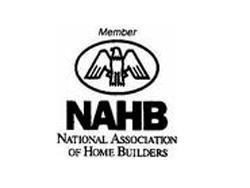Housing Recovery Expected To Pick Up in 2014
Washington, DC, Oct. 4, 2013 -- With home prices and household formations rising and household balance sheets healing, the ongoing housing recovery is expected to gain momentum next year even as several challenges remain, according to economists who participated in the National Association of Home Builders Fall 2013 Construction Forecast Webinar.
“The cards are in play for a decent and fairly strong recovery in 2014 and particularly in 2015,” said NAHB Chief Economist David Crowe.
“From the standpoint of GDP growth, housing has been a plus, growing at two, three and four times the rate of the rest of the economy in recent quarters.”
Helping to spur the housing rebound was a double-digit increase in home prices over the past year, driven in part by tight inventories of new and existing homes for sale and gradual gains in employment.
“We expect to see price increases moderate in the next few years as we see additional inventory on the market and investors back away as the bargains disappear,” said Crowe.
Another bright spot is rising household formations that were delayed during the downturn as college graduates and young professionals were forced to move back in with their parents or double up as roommates.
At the height of the housing boom, the U.S. was producing 1.4 million additional households every year. That figure plunged to 500,000 during the depth of the recession and today is now back up to 700,000.
Meanwhile, households across the nation have been increasing their savings and shedding debt. “They’ve corrected a lot of excesses and feel more comfortable about moving forward,” Crowe said, noting that the University of Michigan Consumer Sentiment Index shows that the%age of consumers who believe that now is a good time to buy a house is back up to levels last seen near the housing boom.
However, Crowe cited several headwinds that are impeding the recovery.
“Credit conditions are much tighter now, builders are increasingly facing labor shortages, lot supplies are tight, building material prices are rising, and inaccurate appraisals are hurting home sales” he said.
“You can’t charge more than you can get an appraisal for,” Crowe added. “Even though we are seeing price increases in labor, land and materials, 36% of builder recently said they had lost at least one sale over appraisals coming in below the cost of production.”
NAHB is forecasting 924,000 total housing starts in 2013, up 18% from 783,000 units last year.
Single-family production is expected to rise 17% this year to 629,000 units, jump an additional 31% next year to 826,000 and surpass the 1 million mark in 2015.
NAHB is projecting that multifamily starts will increase 20% in 2013 to 296,000 units and rise an additional 10% to 326,000 units next year, which Crowe characterized as a normal level of multifamily production.
Meanwhile, residential remodeling has returned to previously normal levels of the early 2000s and remodeling activity is expected to register a modest gain this year over 2012.
“Our Remodeling Market Index has been above 50 for three of the last four quarters, indicating that remodelers feel things are going better,” said Crowe. “Remodeling did not fall as much, so it does not have as much ground to make up.”
Regarding the uncertainties emanating out of Washington over the government shutdown and the impending Oct. 17 deadline when the government will run out of cash to pay its bills, Mark Zandi, chief economist at Moody’s Analytics, expressed optimism that Congress will move quickly to resolve these critical issues.
“I truly anticipate that lawmakers will get it together, but that is definitely a challenge to my economic outlook,” said Zandi.
“If policymakers can’t get it together by Oct. 17, we’re toast, and I think we are going into recession.”
Related Topics:RD Weis
